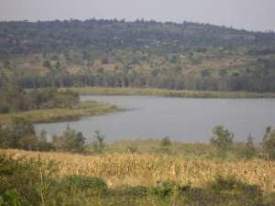Implemented in Bugesera transboundary catchment in Kagera River Basin in July last year, WACDEP is a joint program of African Ministerial Council on Water (AMCOW) and the Global Water Partnership (GWP) with the aim of supporting African countries for climate resilience through improved and sustainable water resources management.
The project also aims at integrating water security and climate resilience into national development plans and decision making processes in Rwanda and Burundi.
Speaking to the Sunday Times in an exclusive interview, Patrick Safari, Regional Coordinator of GWP Eastern Africa said that before implementing the project they did a situation analysis and assessment which showed a gap on what is being done on the ground by Rwanda and Burundi.
"The implementation related to the environmental protection, water and natural resource management is still at a low level," Safari said.
"We need to raise awareness and make sure that the two communities have at least the same level of understanding of environmental degradation and its negative effect on their livelihoods."
Speaking on behalf of Rwanda Natural Resources Authority (RNRA), Ignace Mpundu who works in the agency's water department said that many still don't know how to manage the water bodies around them.
Lake Cyohoha is a good example of a water body that both Rwandans and Burundians have been using for domestic use and farming.
The lake that is found exactly south of Kigali and on the border with Burundi previously faced a water hyacinth problem that was solved on the Rwandan side, Mpundu said.
He added that the Rwandan government was looking for ways to bring much cleaner water closer to the residents through the Energy Water and Sanitation Authority (EWSA), protecting the lake by fencing it 50 meters away from and around the lake as the Rwandan law stipulates and by afforestation in all the catchment areas in order to have soil conservation.
"Since many don't know the methods they can use to protect the environment, there are sensitisation campaigns that are already in place to ensure that everyone gets to know the value of these resources," Mpundu said.
